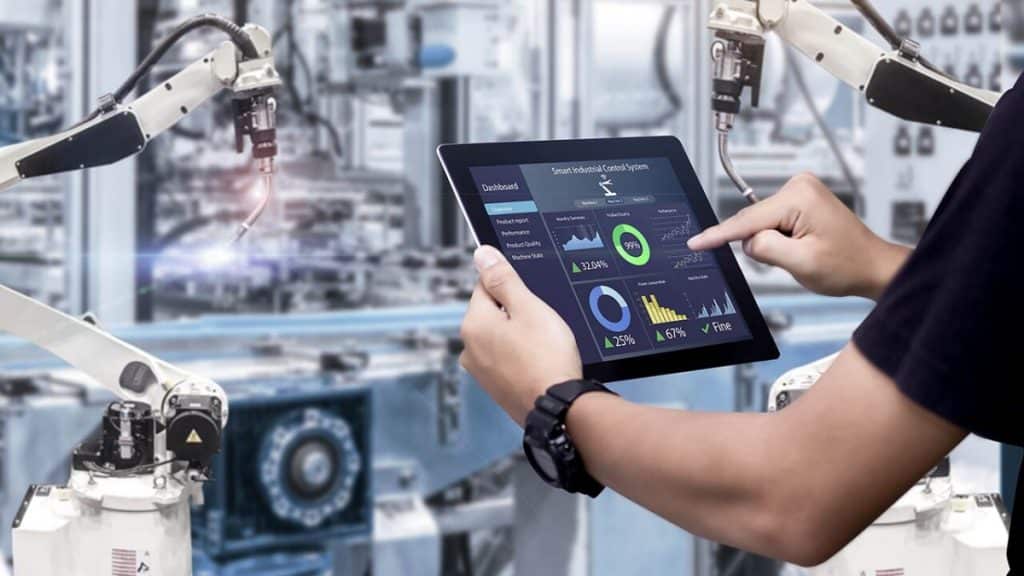The rise of robotics is transforming industries and daily life, but their full potential hinges on a crucial technology: Human-Machine Interface (HMI). As robots become more advanced, user-friendly, and capable of performing complex tasks, the role of HMI manufacturers becomes increasingly vital. HMI is the gateway through which humans interact with machines, and in the context of robotics, it’s the key to unlocking intuitive and efficient control.
In this article, we’ll explore how HMI is related to the future of robotics, focusing on the innovations that are shaping this relationship and the contributions of leading HMI manufacturers.
1. Making Robots More Accessible and User-Friendly
One of the primary goals of robotics is to make machines more accessible and usable by non-experts. HMI plays a critical role in achieving this by simplifying the way humans interact with robots. Touchscreens, voice commands, and gesture-based controls allow users to give instructions to robots without needing complex programming knowledge.
For example, collaborative robots (cobots) are designed to work alongside humans in factories and warehouses. HMI systems with intuitive touch panels or wearable devices allow workers to give quick commands, adjust settings, and monitor operations in real-time. This increases productivity and reduces the need for specialized training.
2. Enhancing Communication Between Humans and Robots
A key challenge in robotics is enabling effective communication between humans and machines. Traditional methods often involved complex code or pre-defined instructions, limiting flexibility and adaptability. Modern HMI systems have addressed this by incorporating natural language processing, gesture recognition, and visual feedback.
In applications like healthcare, robots equipped with sophisticated HMIs can respond to verbal instructions or hand movements. This allows doctors or caregivers to control robotic assistants intuitively during surgeries or patient care tasks. Advanced HMI systems also provide visual feedback, enabling users to monitor robot status, errors, or operational data at a glance.
3. Advancing Robotic Autonomy and Learning
HMI isn’t just about direct commands; it’s also about enabling robots to learn and adapt based on interactions. Machine learning and AI algorithms integrated with HMI systems help robots interpret and respond to human input more intelligently. This advances robotic autonomy, allowing machines to perform complex tasks with minimal intervention.
For instance, in industrial settings, operators can guide robots through tasks using visual HMI interfaces. The robots then learn from these demonstrations and refine their operations over time. This reduces the need for constant supervision and enables robots to handle more diverse and dynamic tasks.
4. Improving Safety in Collaborative Environments
In environments where humans and robots work closely, safety is paramount. HMI plays a crucial role in enhancing safety by allowing real-time monitoring and control of robotic systems. HMI interfaces equipped with emergency stop functions, proximity sensors, and real-time alerts help prevent accidents and ensure smooth collaboration.
Additionally, wearable HMIs can track the location and movements of workers, adjusting the robot’s behavior to avoid collisions. HMI manufacturers are continuously innovating to create interfaces that facilitate safe, efficient, and intuitive interactions between humans and robots.
5. Customizing and Personalizing Robot Interactions
With the increasing integration of robots into homes and workplaces, there’s a growing demand for customization and personalization. HMI systems allow users to customize robot settings, behaviors, and responses according to their preferences. This personalization enhances the user experience and makes robots more adaptable to individual needs.
Consider service robots in the hospitality industry. A hotel guest can use an HMI panel to customize their robot assistant’s tasks, such as setting wake-up calls, requesting room service, or adjusting room conditions. The robot, equipped with a user-friendly HMI, can remember these preferences and provide a more tailored experience.
6. Revolutionizing Remote Robotics with HMI
Remote robotics is an emerging field where operators can control robots from distant locations. This has applications in hazardous environments, space exploration, and telemedicine. Advanced HMIs allow operators to control robots remotely with precision, using visual interfaces, haptic feedback, and real-time data visualization.
For example, in telemedicine, doctors can remotely operate surgical robots with the help of haptic feedback and visual HMI displays. This combination of HMI and robotics opens new possibilities for providing healthcare services in remote areas and performing delicate surgeries with greater accuracy.
7. Expanding Applications Across Industries
The future of robots is not limited to factories or warehouses. Robots are becoming integral to sectors like healthcare, agriculture, hospitality, and retail. In each of these areas, HMI systems play a critical role in enabling efficient and intuitive interactions.
In agriculture, robots equipped with HMIs help farmers monitor crop conditions, automate irrigation, and even harvest produce with minimal human intervention. In retail, robots with touch-based HMI panels assist customers with product information, navigation, and checkouts. The flexibility and adaptability of HMI technology allow robots to cater to a wide range of applications.
Conclusion
The relationship between HMI and robotics is shaping the future of automation and human-machine collaboration. HMI systems enable intuitive control, efficient communication, and enhanced safety, making robots more accessible and versatile. As advancements in HMI continue, we can expect even greater synergy between humans and machines, leading to smarter, more adaptive robotic solutions.
For companies looking to integrate robotics into their operations, partnering with leading HMI manufacturers is key to achieving seamless interactions and maximizing the potential of robotic systems. The future of robotics isn’t just about making smarter robots—it’s about creating smarter ways for humans to interact with them.
